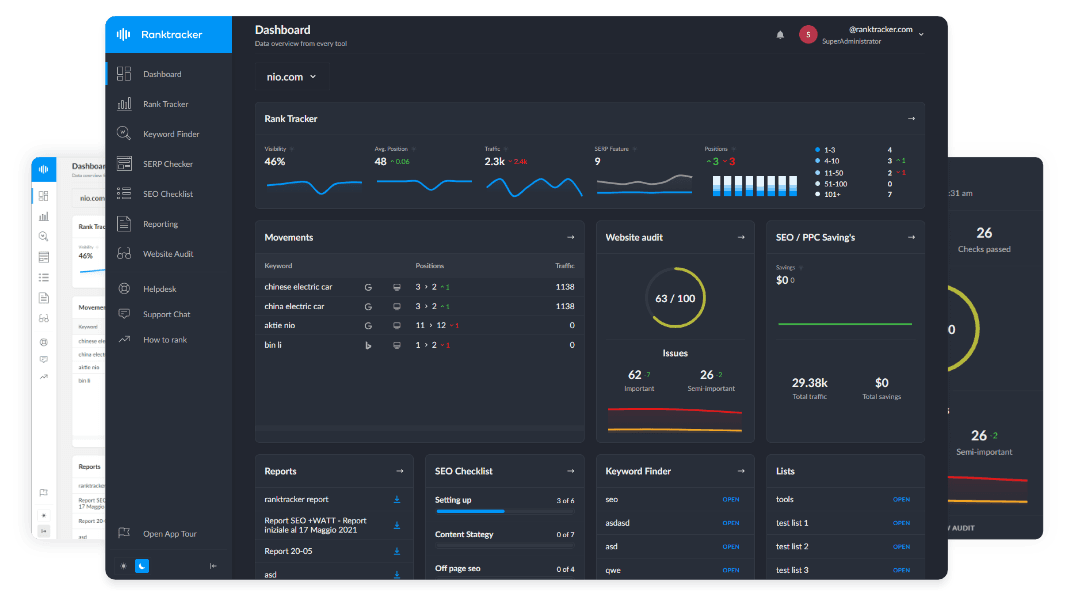Intro
AI is transforming how businesses and marketers approach content creation. The technology is allowing businesses to create volumes of value-adding content quickly and at scale.
However, as automation continues to grow, businesses find themselves struggling with maintaining authenticity. AI cannot fully deliver the authentic and trustworthy content that audiences expect.
In the absence of the human touch, even the most optimized content can fail. Hence, it is wise to blend AI efficiency with genuine narratives, thus building trust while connecting with the readers.
In this post, we will explore how you can create authentic AI-powered content that ranks well in the search engines, builds trust, and drives conversions.
What Lies at the Intersection of AI and Authentic Content
To begin with, we need to understand how AI intersects with content authenticity. Let’s look at the opportunities and challenges it offers in this segment.
The Rise of AI in Content
AI is no longer a revolutionary concept in content marketing; it has become central to content strategies for businesses across industry segments. Various AI-powered tools can speed up research and generate complete content drafts, social media captions, product descriptions, and personalized email copy within a matter of seconds. They also help overcome the creative block by generating fresh content ideas.
Such speed is invaluable for businesses managing high-content demand. However, AI often struggles with the emotional nuances and relatability. This challenge too is being taken care by human AI tools that refine raw AI-generated content and convert it into content that feels like written by a human. The tool enhances the tone, context, and flow while keeping the effectiveness intact.
Challenges in Maintaining Authenticity
AI excels in producing keyword-optimized and grammatically sound content. However, it cannot make the content feel genuine through subtlety and empathy. AI content is often rife with tone mismatches, awkward phrasing, and generic statements that make it non-relatable to audiences.
When such content is read by humans, it often feels robotic and disconnected. This not just erodes trust but also hampers engagement and conversions.
The All-in-One Platform for Effective SEO
Behind every successful business is a strong SEO campaign. But with countless optimization tools and techniques out there to choose from, it can be hard to know where to start. Well, fear no more, cause I've got just the thing to help. Presenting the Ranktracker all-in-one platform for effective SEO
We have finally opened registration to Ranktracker absolutely free!
Create a free accountOr Sign in using your credentials
That’s why human oversight is critical. Marketers must edit and refine AI-generated content by injecting personality and relevance and tailoring the message to suit the audience’s needs. Building authentic content is not about outright rejecting AI; it is about elevating it with human input.
4 Strategies for Building Trust with AI-Generated Content
Building trust with the target audience is the key objective of a content marketing strategy. Marketers leveraging AI can create content that feels real, resonates with the audience, and ranks in the SERPs (search engine results page).
Here are 4 proven strategies that can help you build trust while leveraging the power of AI.
1. Incorporate the Human Touch through Personalization
AI-generated content often lacks personal context. Audiences feel connected to and consume content that talks about their pain points and goals.
Hence, AI should be used to create more relatable content that includes personal anecdotes, team experiences, and case-specific challenges.
For instance, if a freight shipping company plans to write a post on shipping challenges on their blog, it would help to add a real-world example for the operations to make the content more relatable.
This technique not only makes the content engaging but also boosts credibility.
Edit AI content drafts to include industry-specific terminology, cultural nuances, and emotional cues. Doing so will ensure your content speaks directly to the audience, building relevance and connection.
2. Be Transparent
As business increase their dependence on AI, it can be tempting to let it manage all the work behind the scenes. However, transparency is key to building trust. Hence, if AI is central to your content-creating operations, be open and honest with your approach.
The All-in-One Platform for Effective SEO
Behind every successful business is a strong SEO campaign. But with countless optimization tools and techniques out there to choose from, it can be hard to know where to start. Well, fear no more, cause I've got just the thing to help. Presenting the Ranktracker all-in-one platform for effective SEO
We have finally opened registration to Ranktracker absolutely free!
Create a free accountOr Sign in using your credentials
You may want to add a line to your AI-written blog post, like:
‘This article was assisted by AI and reviewed by our editorial team.’
Or
‘This article was written with the help of AI assistance. All content is, however, thoroughly reviewed, fact-checked, and structured as per our ideas and thoughts.’
Check out how One Generation, a content writing agency, has an entire page dedicated to explaining their AI content policy.

Being open with your audience fosters credibility and shows that you aren’t hiding the use of technology while creating the quality content they consume.
This approach is especially essential in regulated industries or segments where your content will have a huge impact on decisions. For instance, healthcare, financial services, legal services, and insurance, among other industry segments, should disclose AI involvement in their content to reinforce credibility and ethical responsibility.
3. Maintain Consistent Brand Voice
Regardless of how much content you produce or the tools you use, the brand tone and personality should remain consistent. Consistency builds familiarity and trust.
Whether your voice is professional, casual, or friendly, make sure your AI content aligns with that tone.
Begin by setting clear guidelines for authentic brand voice. Every member in the content team should be trained to follow these guidelines. Moreover, ensure that the AI tools being used are trained to match the established voice.
Finally, the human editor should review the AI content concerning these guidelines to spot and correct any tone mismatches or off-brand phrasing.
Take PACK & SEND New Zealand, for instance. The freight and parcel delivery brand maintains a consistent and customer-focused tone across all digital touchpoints. Whether it’s their blog post or website copy, you will find an approachable and friendly tone that reinforces their expertise and customer trust.
Home page

|

4. Integrate SEO without Compromising Readability
Creating content that ranks is about sharing content that adds value to the target audience. Steer clear of tactics like keyword stuffing as they undermine trust. Authentic AI content must be optimized for search engines and humans.
First, conduct keyword research with reliable tools like Ranktracker’s Keyword Finder and ensure that the keywords are naturally integrated. Focus on user intent and leverage AI to generate draft outlines or initial ideas based on those insights. Next, edit the content to correct the tone, flow, and relevance.
The All-in-One Platform for Effective SEO
Behind every successful business is a strong SEO campaign. But with countless optimization tools and techniques out there to choose from, it can be hard to know where to start. Well, fear no more, cause I've got just the thing to help. Presenting the Ranktracker all-in-one platform for effective SEO
We have finally opened registration to Ranktracker absolutely free!
Create a free accountOr Sign in using your credentials
Structure is equally important to improve user experience and engagement. Use descriptive headings, short paragraphs, and bullets to make the content skimmable. Include internal links to useful resources and external links sparingly—only where they add real value.
Adapting your SEO strategy for the AI era can ensure your content is discoverable, answers real questions, and positions your brand as a trusted resource.
Summing Up
AI is a game-changer for content creators and marketers. However, the authenticity of the content remains a huge concern, impacting trust and overall conversions.
Marketers should learn the art of combining AI efficiency with human insight to build value-adding and trustworthy content. This can be achieved through personalization, transparency, brand voice consistency, and SEO best practices.
The insights shared in this post will help you use AI the right way to create content that ranks and resonates with the right audience.

